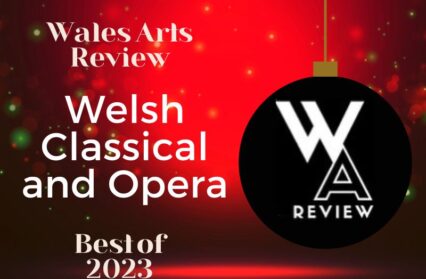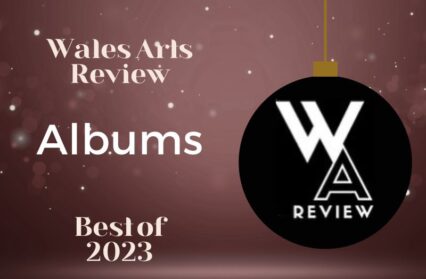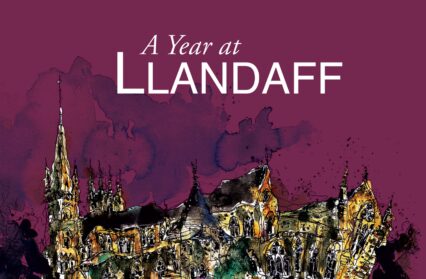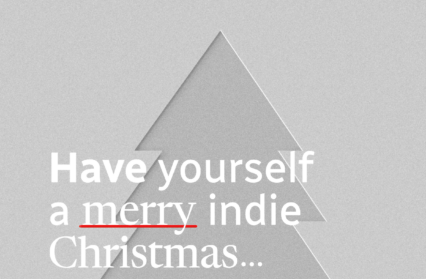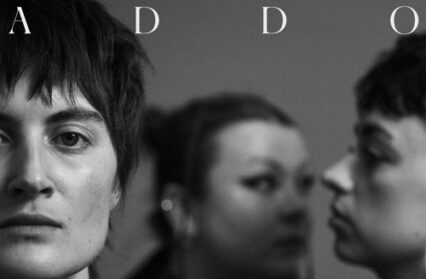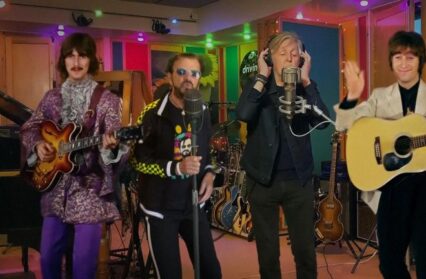Gary Raymond looks at the history of music festivals in the UK before offering his take on the Green Man 2013 festival line-up.
In 1914, English composer Gustav Holst began renting a 300 year old cottage overlooking the Essex village of Thaxted as a weekend and holiday retreat for himself and his wife, a place to recuperate and fill his sickly lungs with fresh country air when away from his day job as a music teacher in London. It was there that Holst met the vicar of Thaxted’s St Mary’s Church, socialist and eccentric, Conrad Noel. Noel was known for disturbing the calm of village life with his vibrant May Day festivals filled with dances and jamborees, choral music and maypoles. The two became friends and soon Holst found himself enraptured by the unusual architectural space on offer in the cavernous St Mary’s Church’s main hall. For some time Holst had been listening to the enthusiasm with which his great friend Ralph Vaughan Williams had embraced the lessons of Cecil Sharpe’s English folk revivalism, and to how well Williams had incorporated these lessons into some of his finest music. It was in the halls of St Mary’s that Holst would partner this interest in the successes of Williams’ folkist experiments with Noel’s eccentric celebrations, and by the Whitsun of 1916 he had organised a music festival that brought together many styles of music. The Whitsun Festival, as it became known, was the apex of many years of English music’s search for a new identity that looked to its folk routes as closely as it looked to the classical composers of Europe. The nature of this gathering at Thaxted in 1916 is perhaps the thing of greatest interest here. Holst wrote in a letter to a friend:
It was a feast, an orgy. Four whole days of perpetual singing and playing, either properly arranged in the church or impromptu in various houses or still more impromptu in ploughed fields during thunderstorms, or in the train going home… the reason why we didn’t do more is that we were not capable mentally or physically of realising heaven any further.
It was, arguably, the first music festival as we know it today; the Grandaddy of them all. Holst wrote that it was a revelation to him, that it opened his eyes to the possible future of English music, and it was during this time also that he composed The Planets, an orchestral suite now so famous, it is almost the ubiquitous sonic language for the planetary characteristics the music represents.
In 1916 the Great War still pounded away at the fields of Europe, and the distrust of modernism by the great artists of the day, such as Holst and Yeats and Edward Thomas, was at an understandable peak. It was heavy machinery, albeit operated by men, that was tearing up the earth. When war was over (if it would ever be over) modernism would continue to bludgeon nature and heritage and gentility; the things perceived to be the very essence of English life. And so as the industrial world continued to flower its dense grey buds all over the world, so continued the core need for what was to become known as the counter-culture, a movement which found mainstream commentary by the time of the nineteen sixties as the political left got involved in the folkist non-agenda. Music festivals were gathering spots for people who wanted to escape the trappings of the modernist’s world.
Before long the modernism that Holst and Yeats et al. so feared and despised became corporatism, and corporatism, unlike the dreaded realities of industrial warfare, does not bludgeon, but it infests – a tactic in a foe just as fearsome. It was not long after this that the corporate world discovered the riches on offer in youth culture – and the music that youth culture embraced – that the corporate world began to get its gloopy fingers into the festivals as well. The modern totem of this complete up tip of the origins of the music festival is Glastonbury, which now houses over 400-odd bloated back-slapping BBC journalists every year without so much as a bray of burden. Around 3,000 acts performed there in 2013. It is not a music festival, it is the music business. The corporate end, anyhow; it’s their AGM.
Glastonbury is not the only festival, of course, thank goodness. And there is something for everyone across the isle. And in an imposing setting in a drastic dip of the Black Mountains is Green Man, held in the grounds of the Glanusk Estate. And it is decidedly closer to Thaxted than it is to Glastonbury.
It is a festival that almost immediately brings back the memory of the Thaxted story. Physically there is the raw green setting with dapples of permanent rurality: the stone walls of the estates, the walled garden (which now houses bands and the more eccentric side of the festival’s entertainers); and notionally the generosity of spirit that is palpable throughout the place. It has an unabashed liberal British folkist ideal underpinning it – and not the un-jilt-able generation of flower power, but the reserved intellectual reverence of the likes of Holst, Vaughan Williams, and before them Cecil Sharpe and Williams Morris. For the duration of the festival a thirty foot Green Man overlooks the proceedings, this year sitting, like an emerald King on a wicker throne, waiting for his annual sacrifice in flame to the gods of reverie. His immolation is the closing ceremony on the Sunday night.
The place is buzzing with life, but it is not crowded, a suggestion that comfort and vibe are more important than cramming people in. And I am reliably informed that the Green Man line-up is chosen on the sole principal that they are acts Festival organiser Fiona Stewart wants to see. It is a successful strategy. Patti Smith makes an intimate New York cellar bar out of the Far Out tent, delivering stirring renditions of ‘Redondo Beach’ and ‘People Have the Power’, as well as extremely moving versions of John Lennon’s ‘Beautiful Boy’ (with harp accompaniment) and ‘Elegy’, dedicated to her late friend and the song’s co-writer, Allen Lanier. Smith has never seemed so content, even in her melancholy, to be adored by her fans, and the warmth in that tent on the Thursday night sets the tone for the following three days.
Edwyn Collins is a highlight, just eight years after a severe stroke that left him paralysed and unable to speak, he is a remarkable sight, not just one of his generation’s greatest song writers. He takes to the stage and sits in front of a superb band, delivering classic Orange Juice tracks as well as some of his best solo recordings. One highlight is Collins’ son, William, joining him for a vocal, which he delivers through a film of pained shyness and petrified gratitude to the enthusiastic audience.
So many acts seemed ready to respond to the mist of good feeling that covered the site. Midlake shimmered; Lord Huron jammed a convincing impersonation of the Rolling Thunder Revue; Low managed to sleekly rise up through their leathery poetic sound and enrapture the crowd; Steve Mason played a strong set of his now darkly powerful back-catalogue, his early Beta Band indie experimentalism now filled out with the excellent soul-and-samples of his recent solo work; Fuck Buttons were the fittingly thunderous climax to the Friday night’s proceedings and the broken back of most parties, I suspect.
John Cale, a classically trained cellist, perhaps has more in common with the symbolic value of Gustav Holst as a festival organiser, a cross-over artist, a purist in the sense that ‘the work is the thing’, that ‘realising heaven’ is the target. Cale is most likely Wales’ greatest musical export of the last sixty years, and his set list here is refreshingly iconoclastic of even that most meaningless of claims. Even turning his stupendous ‘Fear is A Man’s Best Friend’ into a homage to the Flying Lizards can’t take the edge off the song, and closing with a raucous punk barbed wire version of The Modern Lovers’ ‘Pablo Picasso’ left the audience shaking as one body, beaten down by the relentless riff and the confused, reaching narrative of eternal self-doubt.
Not all bands filled with me joy, however. Eighties Glasgow pop outfit The Pastels were strangely placed on the main Mountain Stage for the Friday afternoon in the blanket sunshine, and were out of key and under-energised. Kate Mercer for Digithon | Visual Arts who preceded them were similarly shackled by a lack of enthusiasm. Festival headliners, Band of Horses, laid out all the big fist pumping choruses of a Snow Patrol or a Coldplay, and had all the charm, wit and sincerity of them, too. And if anyone can explain to me the attraction of the ever-over-annunciating Villagers you can have 9.9 seconds to convince me they are anything less than the gnomic fantasy of people who find Donovan too esoteric. I’ve found lyrics of more depth and poetry scrawled on the walls of public toilets.
But the music, wonderfully, is part of the festival and not the whole deal. None of the bands are offensive (they didn’t actually book Snow Patrol, after all), and they are all there on merit rather than because Coca Cola or Mastercard want them there. And that ethos filters down from the stage and through the beauty of the setting and the people who are enjoying it.
Green Man is an event that is emerging in the second phase of modern festivals, the ones that have cherry picked the commercial lessons of the Big Boys and the failed ventures, and incorporated it into the absolute tradition of what a music festival should feel like. It is the relaxed attempt to ‘realise heaven’. Holst would have loved it.
Gary Raymond is a novelist, critic, editor and broadcaster.


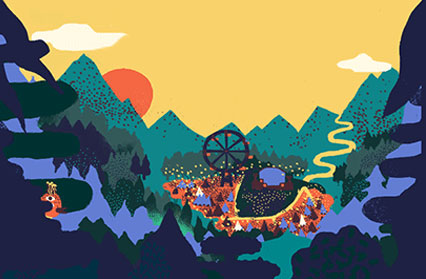
 Enjoyed this article? Support our writers directly by buying them a coffee and clicking this link.
Enjoyed this article? Support our writers directly by buying them a coffee and clicking this link.

